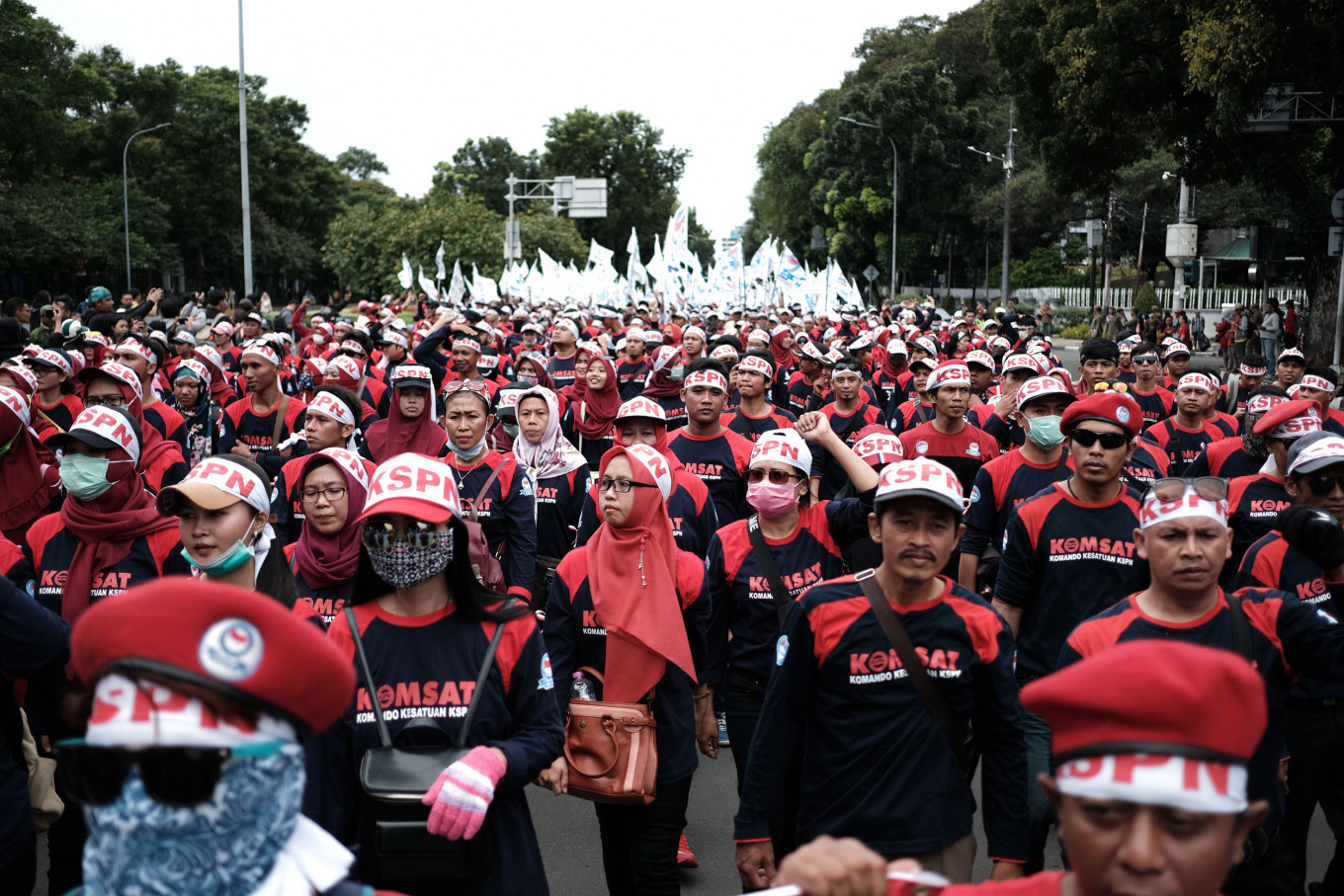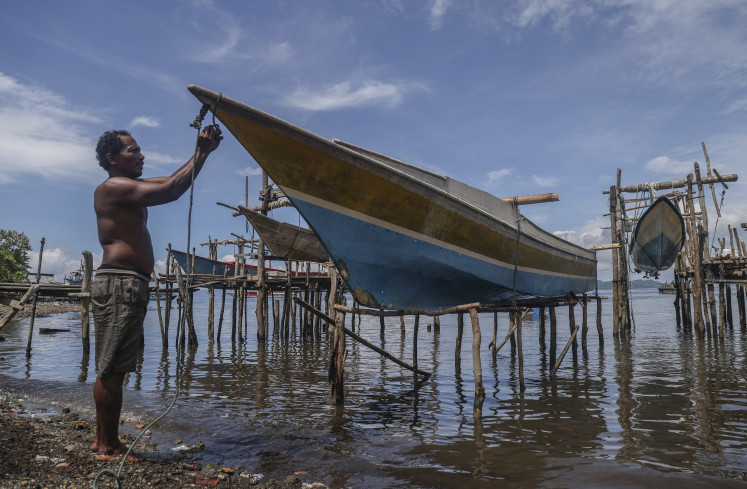Popular Reads
Top Results
Can't find what you're looking for?
View all search resultsPopular Reads
Top Results
Can't find what you're looking for?
View all search resultsHarmonizing minimum wage system
Indonesia’s large population spread throughout a vast territory imposes complexities in terms of economic conditions, potential and the needs of the workers and the families that depend on their wages.
Change text size
Gift Premium Articles
to Anyone
T
he minimum wage is one of the most widespread policies of labor markets. First introduced in the 1890s in New Zealand, it rapidly expanded to 90 percent coverage of the 189 members of the International Labor Organization.
Minimum wages are defined as the minimum amount of remuneration that an employer is required to pay wage earners for the work performed, and cannot be reduced by collective agreement or individual contract. It is meant to be the rock-bottom floor of the labor market.
The main functions of minimum wage are to promote workers’ welfare, economic growth and ensure business sustainability. The ILO Convention No. 131 on minimum wage fixing defined that the minimum wage shall have a broad scope of application with minimum exclusions be adjusted from time to time and be based on the principle of full consultation with social partners.
Furthermore, the minimum wage shall take into account the needs of workers and their families and economic factors, including appropriate measures to ensure its effective application.
Indonesia’s large population spread throughout a vast territory imposes complexities in terms of economic conditions, potential and the needs of the workers and the families that depend on their wages.
At a certain point, the social partners agreed on the use of a common basket of goods and services, the “decent living needs” or KHL — which should suffice for one individual worker. The cost was to be set at the district level, which led to a plethora of values.
In Indonesia, the highest and the lowest minimum wages had a 150 percent difference. In comparison, in Vietnam the ratio is 43 percent, and in Malaysia, before unifying the two regions, the ratio was only 8.7 percent.
Such differences of minimum wage, may provide incentives for some industries to reallocate factories, which could create problems in both the old and new areas, even though the net change of employment maintains an upward trend.
The adjustment implemented by Government Regulation (PP) No. 78/2015 using the national inflation and the growth of gross domestic product (GDP) curtailed the process of divergence, but not the heterogeneity already found. Five years later it is important to revise the schema and, if necessary, propose a new one.
There is no robust quantitative evidence that PP No. 78 has had a detrimental effect on the economic and social indicators since its introduction. PP No. 78 helped to unify the date of implementation, reducing uncertainty for enterprises and workers, allowing better planning of expenditures and incomes on both sides.
Using the International Monetary Fund Article IV report, where it is said “The Indonesian economy performed well in 2018, despite external headwinds”, GDP growth during PP No. 78 was stable at around 5 percent per year. Investment grew around 6 percent, especially after 2016, being 35 percent of the GDP.
The unemployment rate, 6.2 percent in 2015, is at its lowest value in a decade (5.01 percent) in 2019. The economy created jobs for 2.3 million new entrants in the labor market.
Inflation slowed down from 6.4 percent per year in 2014 to 2015 to 3.1 percent for 2018 to 2019. Poverty is at 9.7 percent from 11.2 percent in 2015. Inequality, measured by the Gini coefficient, improved from 0.41 to 0.384.
PP No. 78 imposed a homogeneous adjustment to all regions, with different productive potential and cost of living, affecting those that are far from this average. How can these differences and complexities be considered, taking into account economic factors as well the needs of workers and their families?
After a profound study and exchanges with the government, workers and employers, an alternative to simplify Indonesia's minimum wage system was proposed.
The idea is to have a system with a lower number of rates, no exemptions, aiming for periodic evidence-based adjustments, and to strengthen social dialogue at and above the minimum wage level, which is expected to improve compliance, align with regional development requirements, decrease inequality among regions, and be in line with ILO Convention 131.
The proposal groups provinces into no more than five clusters according to development, economic, and employment potential, and the regencies into no more than three clusters based on costs and living conditions of the population. The system is equipped with tools and a mechanism to monitor impact.
The ILO recommends in the Minimum Wage Policy Guide to “make it as complex as necessary, but keep it as simple as possible”.
With this proposal, the ILO expects to contribute to dialogues on different interests in Indonesia, looking for the best common ground and based in our mandate of 100 years of existence.
***
International Labor Organization senior regional specialist on wages for Asia and the Pacific. The views expressed are his own.











